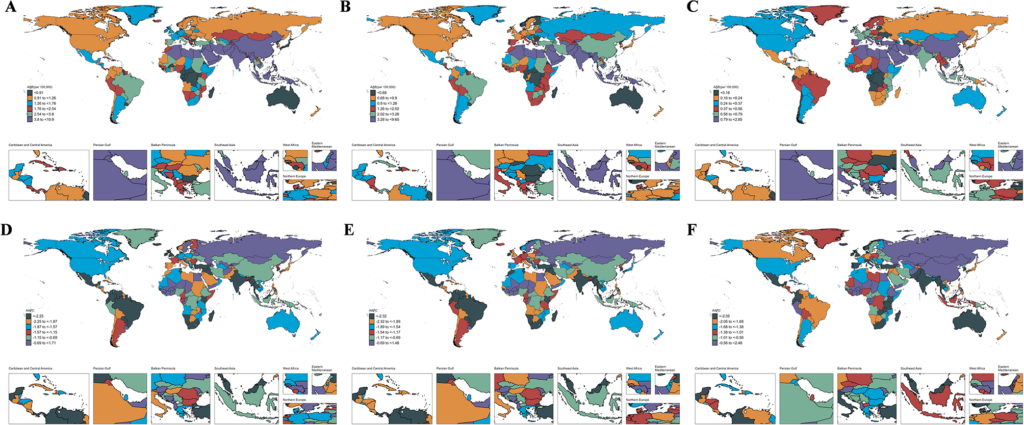Objective This study aims to systematically elucidate the burden of blindness and vision loss (BVL) attributable to smoking from 1990 to 2021 and to forecast the trends in BVL burden over the next decade. Methods We extracted data on years lived with disability (YLDs) and age-standardized YLDs rate (ASYR) related to blindness and vision loss (BVL) caused by smoking, including cataracts and age-related macular degeneration (AMD), from the Global Burden of Disease (GBD) database for the years 1990 to 2021. These data were disaggregated by age, gender, sociodemographic index (SDI), region, and country. Temporal trends in the burden of smoking-induced BVL were evaluated by calculating the average annual percentage changes (AAPCs). Results BVL attributable to smoking presents a significant disease burden, with global BVL-related YLDs attributable to smoking increasing from 1990 to 2021, while ASYR showed a declining trend. In 2021, the global BVL-related YLDs and ASYR attributable to smoking were estimated at 284.03 thousand and 3.27 per 100,000 population. The ASYR for cataract and AMD are 2.60 and 0.68 per 100,000, respectively. The burden was notably higher in males than females, highlighting significant gender disparities. Regionally, the highest burdens were observed in South Asia, Southeast Asia, and North Africa. It is expected that the number of global BVL-related YLDs will increase further by 2030. Conclusion Smoking has imposed a substantial disease burden on BVL over the past three decades. The burden is predominantly concentrated among males, particularly older individuals and those in low to middle-SDI regions. Moreover, the burden of smoking-induced BVL is expected to continue improving over the next decade.Read More
Global, regional, and national burden of blindness and vision loss attributable to smoking from 1990 to 2021, and forecasts to 2030: findings from the Global Burden of Disease Study 2021
Related Posts
Add A Comment


